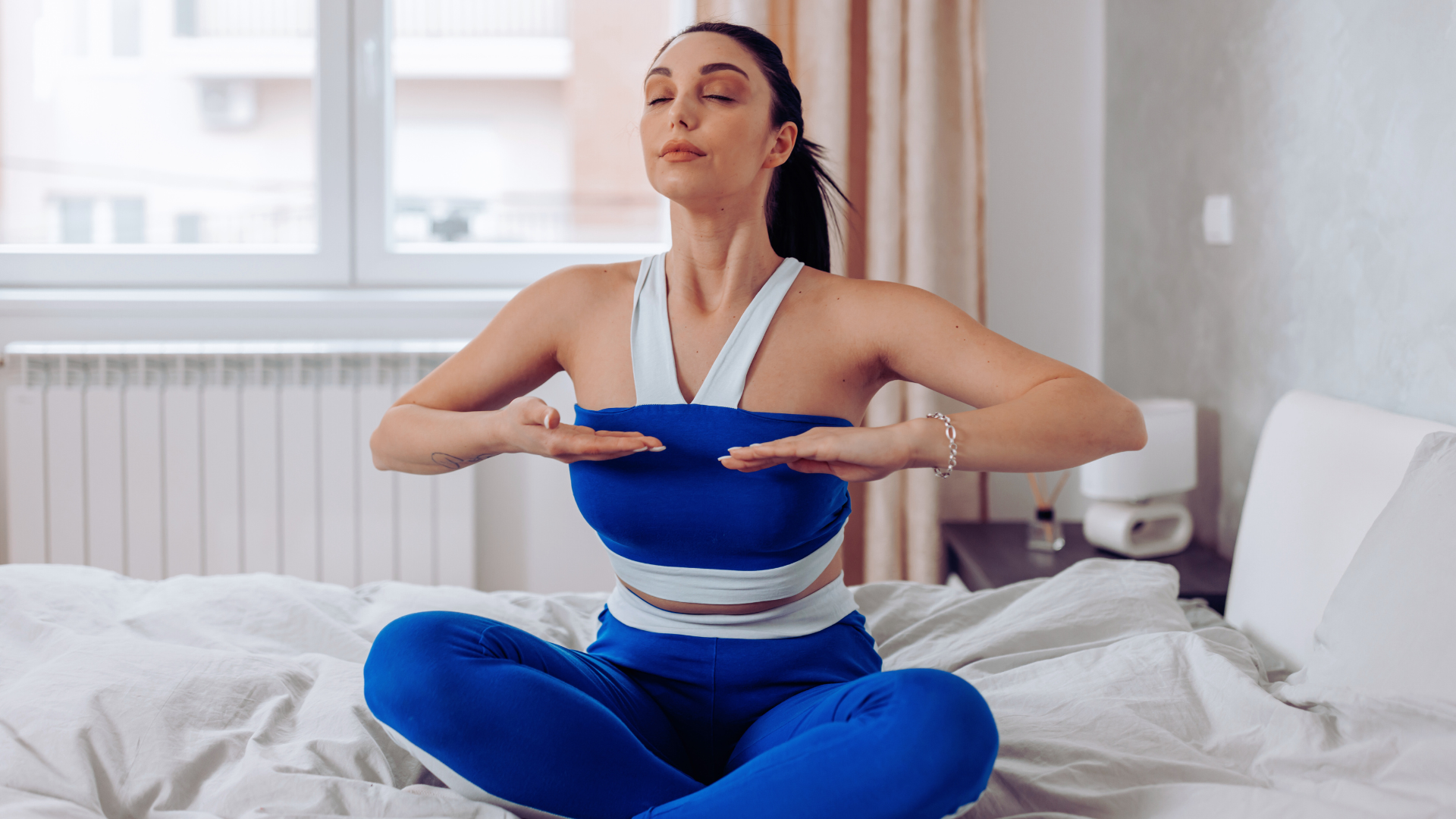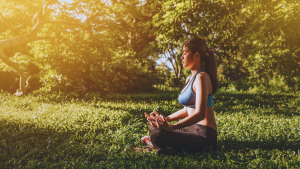Stress and anxiety are common challenges faced by many, often leading to feelings of overwhelm and discomfort. Breathing exercises offer an effective method to alleviate these feelings, enabling individuals to calm their minds and regain control. Implementing simple techniques into daily routines can make a significant difference in managing stress levels.
These exercises can be performed anywhere and require no special equipment, making them accessible for everyone. By focusing on the breath, individuals can create a sense of grounding and balance, allowing them to navigate daily stresses with greater ease.
Understanding the various types of breathing techniques can empower individuals to choose the methods that resonate most with them. Whether seeking immediate relief or long-term strategies, incorporating breathing exercises can foster a healthier mindset.
Understanding Stress, Anxiety, and Breathing
Stress and anxiety significantly impact mental health and well-being. Breathing exercises can influence physiological responses, aiding in stress reduction and anxiety management. This section explores how breathing affects the body, the roles of the sympathetic and parasympathetic nervous systems, and the link between anxiety and breathing patterns.
How Breathing Affects the Body
Breathing serves as a primary mechanism for regulating the body’s stress response. When a person breathes deeply, the body receives more oxygen, which promotes relaxation. This action lowers heart rate and reduces muscle tension, contributing to a calmer state.
Conversely, rapid, shallow breathing often accompanies stress and anxiety. Such breathing patterns can lead to increased heart rates and heightened feelings of panic. Being aware of these patterns is crucial in managing anxiety and enhancing mental health.
The Sympathetic and Parasympathetic Nervous Systems
The body’s response to stress is managed by two branches of the autonomic nervous system: the sympathetic and parasympathetic systems. The sympathetic nervous system triggers the ‘fight or flight’ response, preparing the body for perceived threats. This response leads to increased heart rate and faster breathing.
In contrast, the parasympathetic nervous system promotes relaxation and recovery. It helps calm the body, slowing the heart rate and encouraging deeper, slower breathing patterns. Balanced functioning of these systems is essential for maintaining emotional well-being.
Connection Between Anxiety Levels and Breathing
The relationship between anxiety levels and breathing is significant. Individuals experiencing high anxiety often exhibit rapid, shallow breaths, which can exacerbate feelings of stress. This cycle can create a feedback loop, where anxiety increases as breathing becomes more erratic.
Conversely, intentional breathing exercises, such as diaphragmatic breathing, can help alleviate anxiety. By consciously slowing and deepening the breath, individuals can signal their bodies to enter a state of calm. Understanding this connection can empower individuals to take control of their anxiety through effective breathing techniques.
Core Breathing Exercises for Reducing Stress and Anxiety
Breathing exercises are effective tools for managing stress and anxiety. They help activate the body’s relaxation response, promoting a sense of calm. The following techniques focus on utilising the diaphragm and controlled breathing patterns.
Diaphragmatic Breathing Technique
Diaphragmatic breathing, also known as abdominal or belly breathing, involves engaging the diaphragm fully. This method promotes deeper breaths and enhances oxygen intake.
- Get comfortable: Sit or lie down in a comfortable position.
- Hand placement: Place one hand on the chest and the other on the abdomen.
- Breathe in: Inhale deeply through the nose for a count of four, ensuring the abdomen rises while the chest remains still.
- Breathe out: Exhale slowly through pursed lips for a count of six.
Practising this technique for a few minutes daily can help reduce tension and foster a state of relaxation. Regular use can contribute to an overall sense of well-being.
Deep Breathing for Relaxation
Deep breathing exercises can significantly reduce feelings of anxiety and stress. This process fosters a relaxed state by decreasing heart rate and promoting a sense of tranquillity.
- Sit comfortably: Find a quiet space and sit upright.
- Inhale deeply: Breathe in through the nose for a count of five, filling the lungs completely.
- Hold the breath: Retain the breath for a count of three.
- Exhale: Breathe out slowly through the mouth for a count of six.
Repeating this cycle for ten minutes increases oxygen flow and helps clear the mind. It serves as a simple yet powerful tool for immediate stress relief.
Box Breathing Method
The box breathing method employs a structured pattern that fosters focus and calm. This technique is especially useful in high-pressure situations.
- Breathe in: Inhale through the nose for a count of four.
- Hold the breath: Maintain the breath for four counts.
- Breathe out: Exhale gently through the mouth for four counts.
- Pause: Hold the empty breath for another count of four.
This cycle can be repeated several times. Practising box breathing aids concentration and promotes a sense of control during stressful moments.
Alternate Nostril Breathing
Alternate nostril breathing balances the body’s energy and calms the mind. This technique enhances the flow of oxygen and encourages relaxation.
- Position your hands: Use the right thumb to close the right nostril.
- Breathe in: Inhale deeply through the left nostril for a count of four.
- Switch nostrils: Close the left nostril with the right ring finger, then exhale through the right nostril for a count of four.
- Complete the cycle: Inhale through the right nostril, close it, and exhale through the left.
Performing this exercise for five to ten minutes can help alleviate anxiety and restore balance. It is a beneficial practice for both beginners and experienced individuals.
Integrating Breathing with Mindfulness and Relaxation
Combining breathing exercises with mindfulness and relaxation techniques enhances their effectiveness in reducing stress and anxiety. This integration allows individuals to cultivate a deeper sense of calm and presence, leading to improved mental and emotional well-being.
Breathing in Meditation Practices
Breathing serves as a core component of many meditation practices. Focused breathing techniques, such as diaphragmatic breathing, encourage individuals to pay attention to their breath, creating a sense of grounding.
During meditation, participants often count their breaths or visualise the inhale and exhale, reinforcing concentration. This practice not only calms the mind but also alleviates anxious thoughts by redirecting attention to the breath.
Incorporating guided meditation sessions can further develop this connection. Practitioners are encouraged to embrace their breath as a tool for reflection and mental clarity, enhancing their mindfulness experience.
Yoga-Based Breathing Approaches
Yoga integrates breath control, known as pranayama, to deepen the practice of relaxation and mindfulness. Specific techniques, such as Ujjayi and Nadi Shodhana, emphasise inhalation and exhalation patterns that promote tranquillity and balance.
For instance, Ujjayi breathing involves a slight constriction of the throat, producing a soothing sound that fosters focus. Nadi Shodhana, or alternate nostril breathing, clears energy pathways, enhancing emotional stability.
Yoga classes often incorporate these techniques to help participants connect bodily sensations with their breath. This synergy improves the overall yoga experience and deepens relaxation, making it an integral aspect of stress reduction.
Using Breathing with Other Relaxation Techniques
Breathing exercises can complement various relaxation techniques, enhancing their overall effectiveness. Progressive muscle relaxation, for example, pairs well with controlled breathing patterns.
As individuals tense and then relax their muscle groups, focusing on breath helps to maintain mental clarity. This approach encourages a more profound release of tension and anxiety.
Guided imagery is another technique that pairs effectively. By engaging the imagination alongside regulated breathing, individuals can create calming visual experiences that promote relaxation. Implementing these methods together fosters a holistic approach to managing stress and anxiety, solidifying the benefits of mindful breathing.
Long-Term Benefits and Lifestyle Integration
Breathing exercises offer significant long-term advantages that enhance mental clarity and overall well-being. By integrating these practices into daily routines, individuals can develop effective coping strategies to manage stress and anxiety.
Improving Mental Clarity and Wellbeing
Consistent practice of breathing exercises can lead to improved mental clarity. This often manifests as enhanced focus and decision-making skills.
Increased oxygen flow to the brain helps sharpen cognitive functions. As individuals engage in these exercises, they often report a greater sense of calm and reduced feelings of overwhelm.
This, in turn, fosters an improved emotional state, enabling individuals to tackle daily challenges more effectively. Regular practice also enhances relaxation, contributing to a more balanced mental environment.
Breathing as Part of Coping Strategies
Breathing exercises can serve as vital tools within broader coping strategies. When faced with anxiety-inducing situations, they can provide immediate relief and grounding.
Such techniques allow individuals to regain control over their emotions. Simple patterns, such as deep abdominal breathing or the 4-7-8 technique, can be employed seamlessly during stressful moments.
Incorporating breathing exercises into situations like public speaking or challenging work tasks empowers individuals. This integration reinforces resilience, equipping them with essential skills to manage stress.
Breathing Exercises for Overall Health
The benefits of breathing exercises extend beyond mental clarity and stress management. They play a crucial role in promoting overall health by enhancing the body’s physiological functions.
Engaging in breathing techniques can lead to improved lung capacity and better oxygenation of tissues. This has a cascading effect, supporting cardiovascular health and reducing blood pressure.
Moreover, consistent practice can bolster the immune system, decreasing susceptibility to illness. Ultimately, regular breathing exercises contribute to a holistic sense of well-being, reinforcing both mental and physical health.




